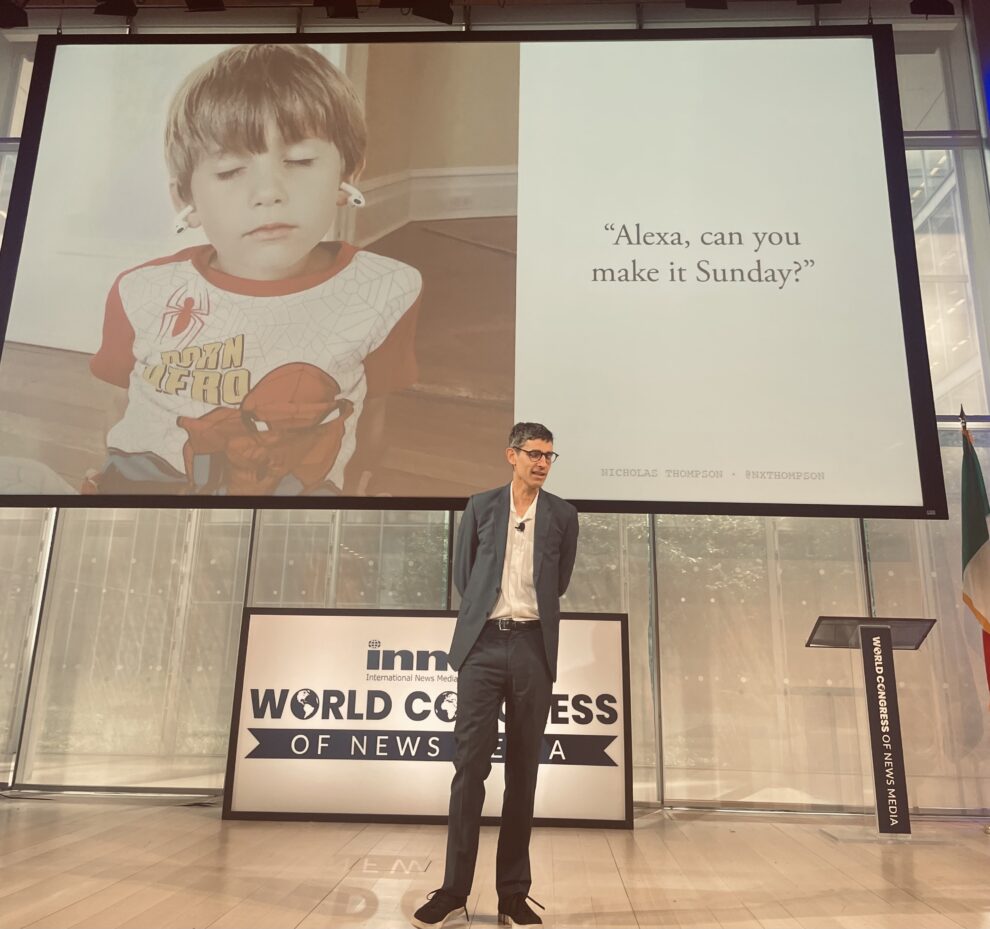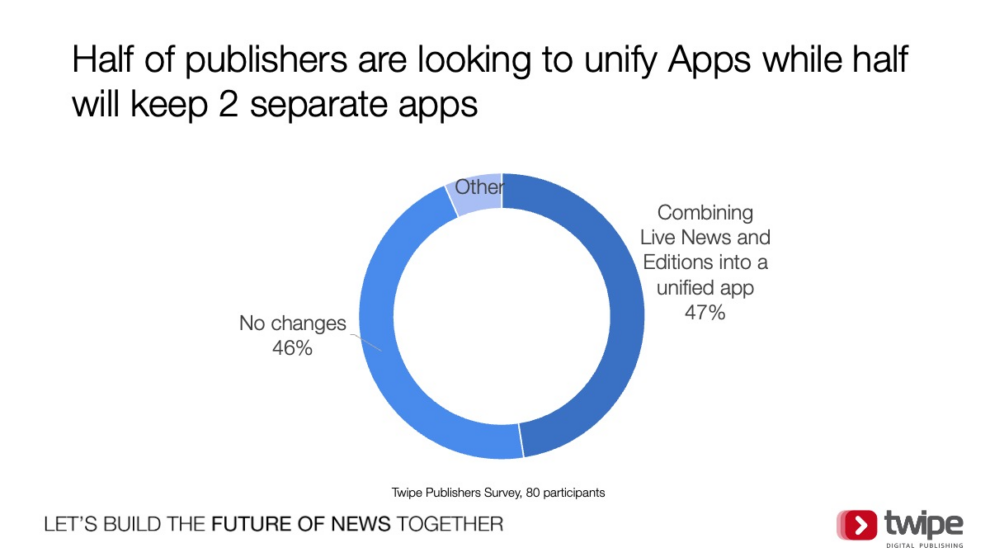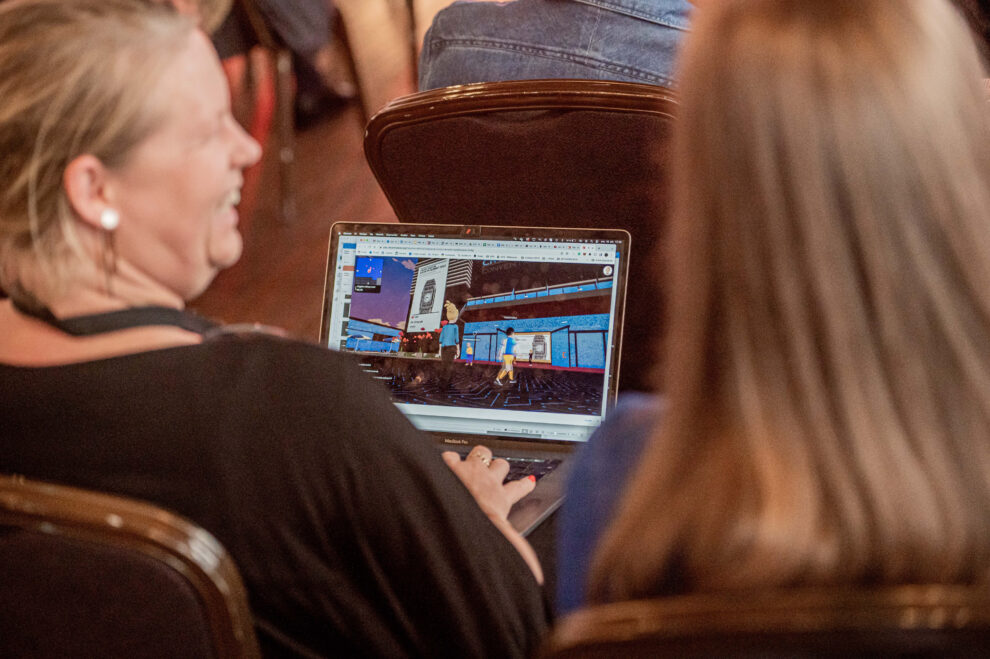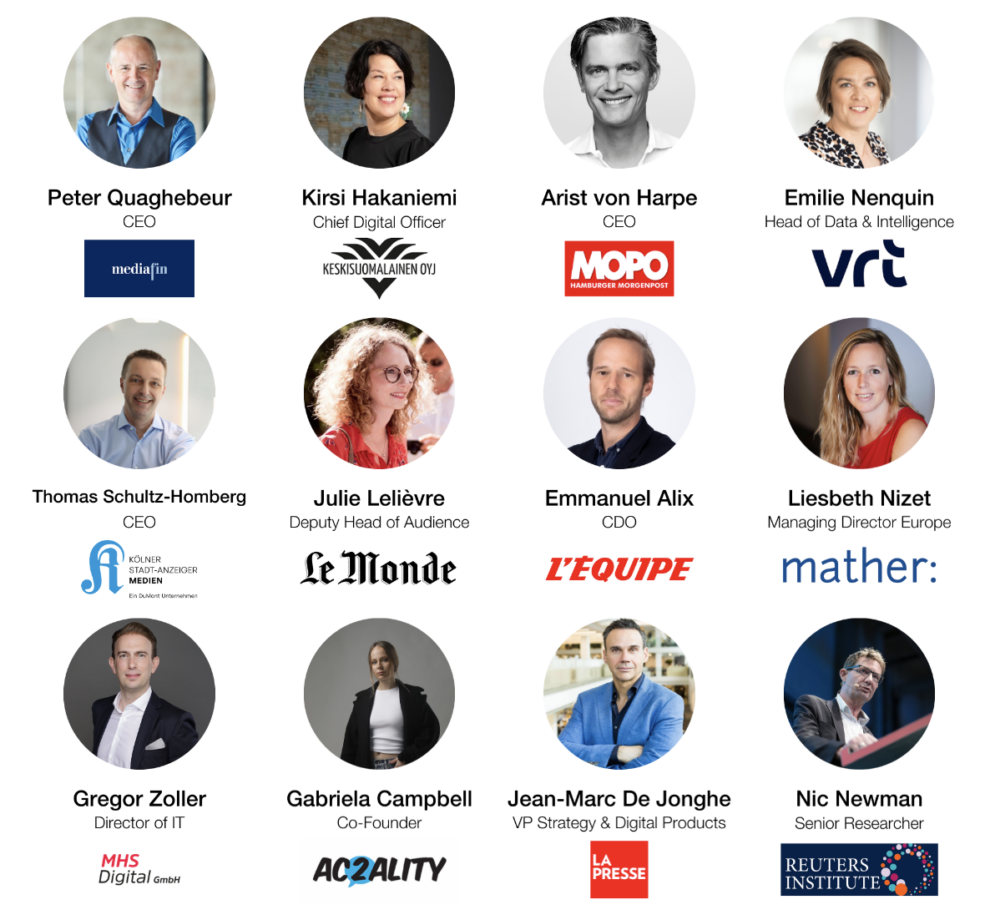Today we launch an article series on the Twipe Insights blog, under the theme ‘Technologies Shaping the Future of News’. In the next 3 months we will dive into technologies that impact news production, distribution and consumption. We will interview key experts from the industry and uncover cases from news publishers worldwide. Subscribe to the newsletter to receive these insights straight into your mailbox.
The series will conclude with an exclusive event in Brussels on September 26th where we will continue the conversation in real life. We hope to welcome you as well. Seats are limited so make sure to grab your ticket here.
Artificial Intelligence
Artificial intelligence has been the word of the year. In May this year, Gartner conducted a survey of 2,500 executive leaders. The results showed that 45% of the respondents increased their investment in artificial intelligence due to the rise of ChatGPT.
💡 Currently 70% of organizations are doing explorations with Generative Artificial Intelligence. (Twipe is also among them).
To look at how news organization can leverage artificial intelligence to shape the future of news, we like to use the framework of Ezra Eeman who looks at opportunities in 3 categories:
- Automation Artificial Intelligence – performs and replaces newsroom tasks to reduce friction and add scale. This includes tasks such as planning and data structuring, transcriptions, tagging or automation of stories.
- Augmentation Artificial Intelligence – supports and augments existing newsroom tasks with intelligence. This includes tasks such as content ideation and variation, personalization or intelligent paywalls.
- Transformation Artificial Intelligence – rethinking and reinventing newsroom tasks and processes. This includes concepts such as conversational artificial intelligence, news bots, synthetic avatars or conversational archives.
Social Platforms
In the journey to shape the future of news, the relationship between news media and social platform became complicated. News publishers seem to finally be on top of their Facebook or Twitter strategies and some have started to figure out how to engage with younger readers on Instagram and TikTok. But as social platforms are looking to secure their own business models and leverage new artificial intelligence tools, new challenges eventually arises.
- Snapchat’s My AI chat bot – adopted by more than 150M users since its launch in May, My AI is used to surface recommendations, inspiration or information about historical events.
- Twitter – the announcement on the 1st of July that X (formerly known as Twitter) will cap the number of tweets for different user types, is another example of how social platforms can influence the way content is distributed to people. This is one of the reasons why news publishers should continue to build direct relationships with readers.
- Threads – a new social media platform launched on 5th of July by Meta, shows a new interest in text-based communication which may could be interesting for news publishers, particularly in building reader habits.
One thing is for sure, though: By overtly focusing on text, Meta is acknowledging that people like to read, not just look at photos and videos.
Martin Peers, The Information on the launch of Threads
- Instagram – allowing professional accounts with more than 10,000 followers to launch subscriptions, yet limited traction or experimentation has been seen in the news publishing world.
- Artifact – launched in early 2023, the app is getting updated with new innovative features at an impressive speed, from artificial intelligence summaries to better use for local communities and even giving people the option to mark titles as clickbait.
👍 Julie Lelièvre from Le Monde will dive into the use of Social Platforms for audience engagement at #DGS23.
Email Newsletters
Email newsletters are a powerful tool for news publishers, offering a direct line of communication with readers. In an essay recently published by co-founder and CEO of Axios, Jim VandeHei argued that email newsletters will only rise in importance in the future of news.
As Microsoft and Google make emailing magically easy by helping you write, answer and sort emails, the inbox will be a more indispensable content destination and repository.
Jim VandeHei, Axios
At Twipe we study the value of email newsletters for increasing reader retention; we work together with news publishers to analyse the effect of JAMES (newsletter automation and personalization using machine learning) on their digital success.
News publishers like Advance Local, Atlanta Journal-Constitution, Daily Mail and NRC have seen success using Twipe’s JAMES artificial intelligence / machine learning technology to automate various types of newsletters, including:
- Daily Briefings – with most popular being at 7am or 9pm, but also some successful automated and personalized lunch newsletters.
- Weekly Overviews – an appreciated format sent on Friday evenings or Sundays with a selection of personalized articles not yet read from the past week.
- Monthly Digests – a selection of personalized relevant articles from a broader pool of content to further boost reader engagement.
📧 Finnish regional publisher Keskisuomalainen won 1st place at the INMA Awards for their used of JAMES personalised newsletters to retain subscribers. Meet Kirsi Hakaniemi, CDO at Keskisuomalainen at #DGS23.
Is this story capturing your attention?
"(Required)" indicates required fields
Audio
72% of news publishers have audio in their plans, but for many it is still seen as an experimental tool. Few have found a way to monetise this valuable content and bring it to the next level.

In his speech at the INMA World Congress, Nicholas Thompson, CEO at The Atlantic identified audio as one of the key technologies in the future of news that publishers should build on. With Amazon further investing in boosting Alexa with new artificial intelligence capabilities, the smart speaker’s growth will be a catalyst for the continued adoption of audio content. We are excited to be working with Nicholas’ team to prepare an intervention during #DGS23.
🎧 NRC Audio is an audio app launched by Dutch publisher NRC in 2020. The case was presented at last year’s Twipe Digital Growth Summit in London, and was covered by WNIP. Meet the NRC team this year at #DGS23 to find out how the product has evolved.
Mobile Apps
In 2023 we have seen the acceleration of the migration from print to digital. For example, news publishers such as Berlingske and Atlanta Journal-Constitution have formally announced to stop print. Then you have news publisher Alabama Media Group that has already taken the bold step and introduced The Lede as an alternative, a new digital only edition built on Twipe’s NextGen platform.
Canada’s La Presse became the first major daily title in the world to replace its weekday print editions with a profitable digital version back in 2016. Vice President of Strategy and Digital Products, Jean-Marc de Jonghe, will share his insights of this move at the upcoming Digital Growth Summit.
Mobile apps will become even more important as one of the key technologies shaping the future of news. It will be in the focus of news publishers to create different mobile app strategies.
In research among customers of our app platforms, we have seen a 50-50 split between news publishers aiming for a hybrid, all-in-one apps vs news publishers that will keep single-purpose apps separated.

📱 Hear from Emmanuel Alix about L’Equipe‘s hybrid app strategy, and from Gregor Zoller about SWMH‘s decision to keep apps separated. Join #DGS23 in Brussels on September 26th.
Augmented Reality / Virtual Reality
Augmented Reality (AR) and Virtual Reality (VR) are set to change the way we consume news and have an impact on shaping the future of news. With the recent launch of devices like Apple’s Vision Pro, the possibilities for immersive, interactive news experiences are expanding. While still in its early stages, augmented reality / virtual reality in news offers exciting opportunities for innovation.

Following an interactive hands-on session built in the Metaverse at last year’s Digital Growth Summit in London, this year we will delve into the potential of these technologies and how news publishers can start to leverage it.
The Digital Growth Summit will be a deep dive into these topics and more, offering insights, discussions and strategies for navigating the rapidly evolving digital news landscape. Stay tuned for more posts in this series as we explore each topic in more detail.
We look forward to welcoming you to the summit on September 26th in Brussels.
Did you find this story interesting?
"(Required)" indicates required fields
Other Blog Posts

Stay on top of the game
Join our community of industry leaders. Get insights, best practices, case studies, and access to our events.
"(Required)" indicates required fields


